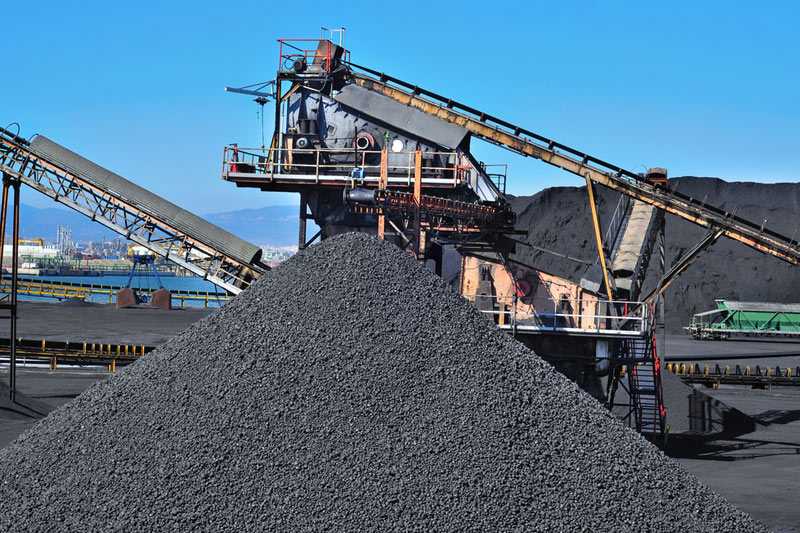(Repeats item issued earlier, with no change to text) --Clyde Russell is a Reuters columnist. The views expressed are his own.--
By Clyde Russell
LAUNCESTON, Australia, Aug 10 (Reuters) - It seems coal miners and traders just can't catch a break, with a rebound in China's imports being tempered by early signs of a turning point in India's import growth.
The main problem for coal exporters such as Australia, Indonesia and South Africa is that China's surge in imports in July is unlikely to be sustained, while India's decline may well be the start of a longer-lasting trend.
China, the world's biggest producer and importer of coal, brought in 21.26 million tonnes in July, up 28.1 percent from June's 16.6 million and the highest in eight months, according to customs data released Aug. 8.
However, imports are down 7.7 percent on a year earlier and down 33.7 percent for the first seven months of 2015, making July's month-on-month result an outlier in a overall weakening trend.
It's also likely that July's strength will remain an exception, rather than herald the reversal of the existing trend.
Traders believe the gain in imports came after Chinese domestic producers limited supply in a bid to bolster prices, with more than 70 percent of miners suffering losses in the first half of the year.
Domestic prices have fallen sharply this year, with benchmark thermal coal at Qinhuangdao port ending last week at 410 yuan ($66.13) a tonne, down 22 percent since the end of last year.
In contrast, benchmark Australian thermal coal at Newcastle port ended the week to Aug. 7 at $59.54 a tonne, down 7.5 percent from the end of 2014.
While the Newcastle index is still mired near the 8-year low of $54.37 a tonne from April, Australian miners haven't suffered as much as their Chinese counterparts this year, and have also had a longer time to adjust to the reality of falling prices, given the current four-year losing streak.
Lower domestic prices may ultimately lead to extended pit closures in China, but the short-term impact is more likely to be to render imports less competitive against local production.
With Beijing also ordering the shutdown of industries to improve air quality ahead of a parade to commemorate the 70th anniversary of the end of World War Two, coal demand may also drop in August and into September.
However, the overall trend of China trying to limit coal use remains intact, as does the stricter quality standards for imports of the fuel blamed for most of the country's pollution problems.
This makes it unlikely that China's coal imports have turned a corner and will resume growing. However, it does make it more likely that volatility in monthly figures will increase as traders try to arbitrage domestic and international prices.
INDIA HOPES FADING?
The great hope for coal exporters in Asia has been India, and the 11 percent slump in imports to 19.3 million tonnes in July from the same month a year earlier will cause consternation among miners.
July's drop was the first in 15 months and was largely the result of lower demand from power generators, according to commodities trader mjunction, which supplies the data.
If there is a positive in the decline in July's imports, it's that the demand is still there. What's lacking is the money to pay for power generated from imported coal.
Power distributors in India are struggling to pay for electricity given high levels of debt and uneconomic regulated pricing regimes that result in financial losses.
However, there are some signs that state-controlled behemoth Coal India COAL.NS is making progress in lifting output in line with the government's desire for domestic production to reach levels that would make imports unnecessary.
Coal India boosted output in the fiscal year to end March to 494 million tonnes, which was 3 percent below the targeted 507 million tonnes, but still 32 million tonnes more than the prior year.
This increase was more than the cumulative 31 million tonnes of growth in the four years from 2010 to 2014, according to a report in The Hindu newspaper on Aug. 8.
Coal India's output rose 12 percent to 121.3 million tonnes in the April to June period this year as it opened new mines and received approvals to expand existing facilities.
However, the company is still a long way from meeting its target of 1 billion tonnes by 2019-20, and it will have to add more than 100 million tonnes of output every year from now until then to meet the target.
While this would seem unlikely, even partial success will hurt demand for imports, which may drop 3 percent to 210 million tonnes this fiscal year, according to Coal Minister Piyush Goyal.
This is based on a coal requirement of 910 million tonnes, up 10 percent from the prior year, and total domestic output of 700 million tonnes from Coal India and other miners, up 15 percent.
This seems a reasonable forecast, and if achieved, would end India's run of rising annual imports, which dates back to 2004, according to data from the U.S. Energy Information Administration.
Overall, there are reasons to be optimistic that India may manage to curb its appetite for foreign coal, while at the same time there are reasons to be pessimistic about a revival of Chinese import demand.
(Editing by Richard Pullin)
